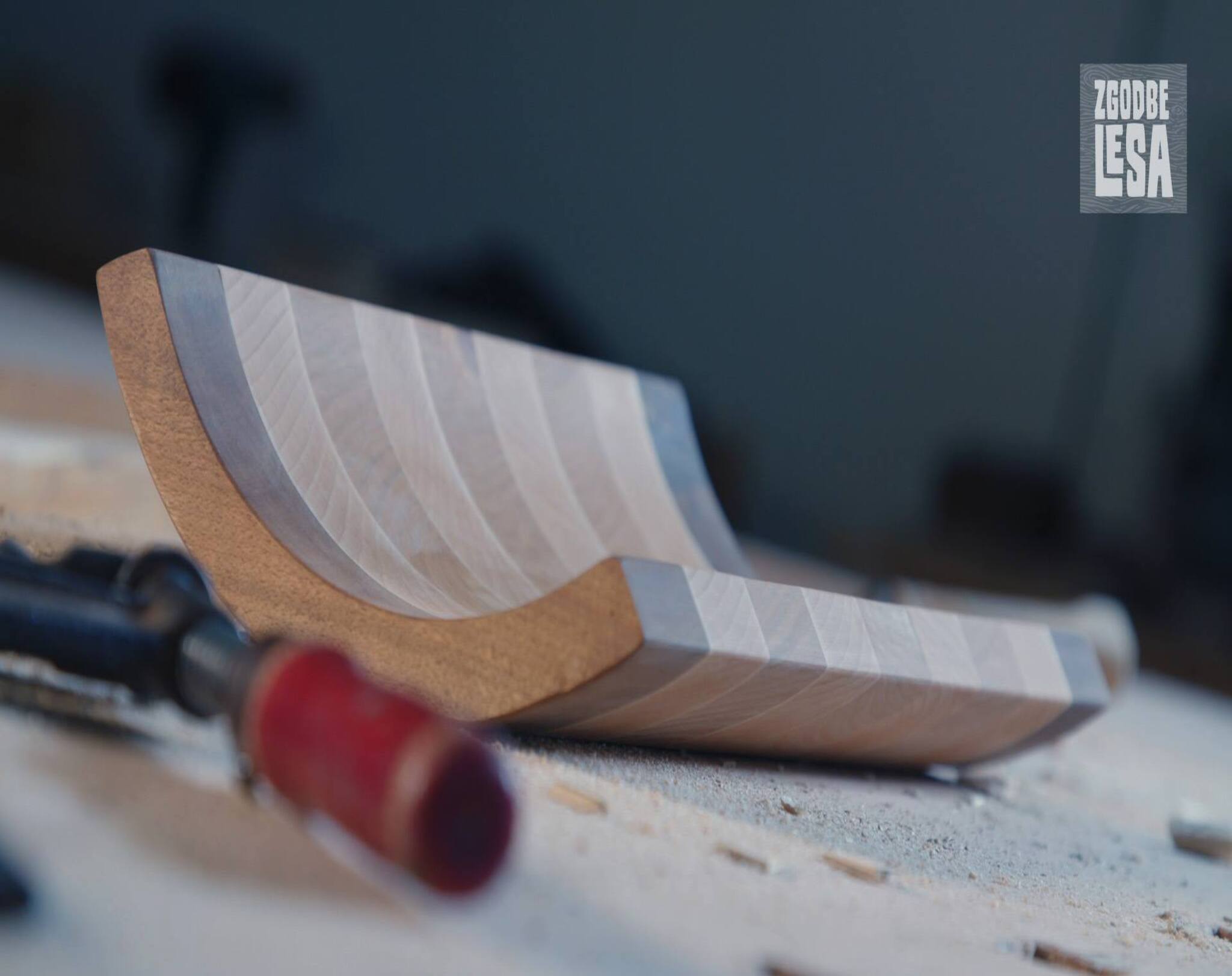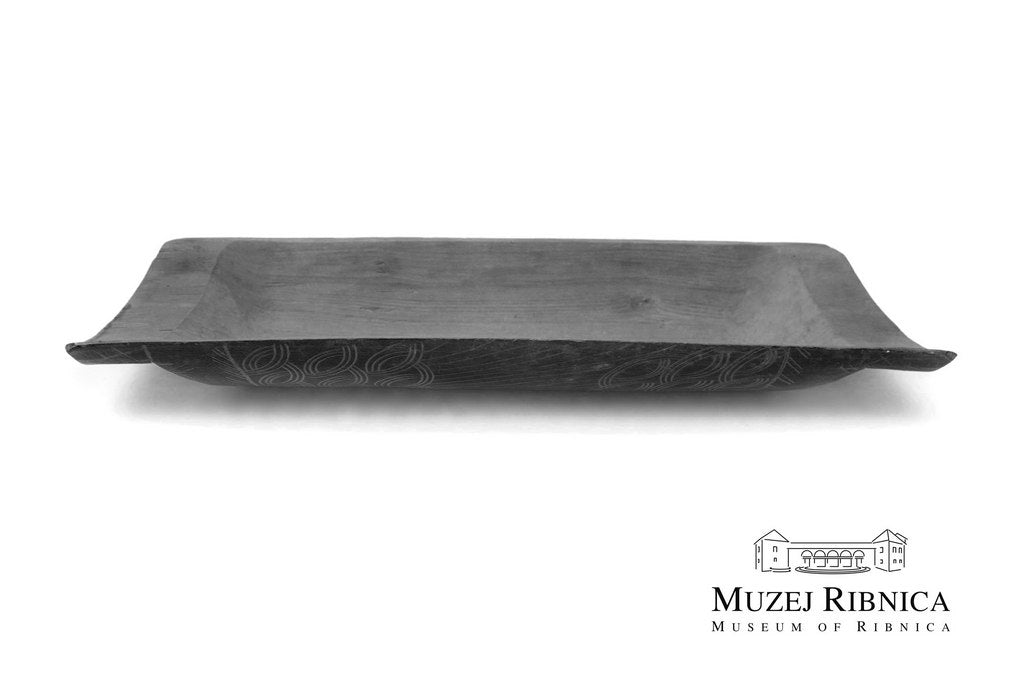NECKE
NECKE OR KADUNJE, THE "MAUTERLE" OF THE KOČEVARS, WERE USED IN DIFFERENT WAYS. LARGE PARTICULARS FOR BAKING OR DOUGH PREPARATION, SMALL FOR CLEANING GRAIN, Kneading SMALL QUANTITIES OF DOUGH, CARRYING LOADS, ETC. IN KOČEVSKE, IF THE FIRST CHILD WAS STILL IN THE CRADLE, THEY PLACED A NEWBORN BABY IN THE NECESSARY.

Necke or kadunje, the nomadic "Mauterle", is a shallow oblong container with thin walls, rectangular in shape, made from one piece of wood. In Kočevsko (as well as elsewhere in Slovenia) they were used in different ways. Great especially for baking or dough preparation, smaller ones - about 70 to 80 cm long, and for cleaning grain, kneading small amounts of dough, carrying loads, etc. In Kočevsko, if the first child was still in the cradle, the newborn was also placed in the cradle.
Kočevars were masters in making nieces. They were usually carved from a beech trunk or a tree trunk. They were burned on a flame and the charred layer was scraped off so that the wood would not crack. The depth of the big nieces, longer than 150 cm and up to 70 cm wide, was burned with glowing coals.
The outside of the nieces was often decorated with various geometric ornaments: circular ornaments, stars, checkered patterns, straight lines, lines in the shape of the letter "s", plant motifs, hearts, etc., which were scratched with a knife or carved with a chisel and a carpenter's knife. six. The sign of the cross or the initials IHS were usually additionally engraved in the middle or on the sides of the children's nieces, and four wooden studs were added just below the edge for tying the ribbon. Children were put to sleep in these little houses, carried to baptisms, to the doctor or bathed in them.

Kočevar peddlers sold nieces in Dolenjska and other regions. As stated by dr. Marija Makarović, they offered them with the words: "Buy, buy, colorful kaduj."
We classify the production of nieces as spoon and cookware, a branch of domestic woodcraft. The production of dry goods was especially widespread in the villages of Roška and south of the town of Kočevja.
At the beginning of the 20th century, 207 out of 1,241 houses in the Kočevo district were engaged in the manufacture of wooden goods, especially in the villages: Stari Log, Šemberk, Novi Log, Topli Vrh, Zgornji and Spodnji Komolc, Kunce, Rdeči Kamen, Podstenice, Muha vas , Mokra Gorica, Štale, Ribnik, Zgornja Srednja vas, Topla Gorica, Dolgi Dol, Stene, Rajhenav, Koprivnik, Golobinjek, Gorica, Resje, Mozelj, Rajndol, Verderb, Verdreng, Spodnji Log and Ravne.
Although the decline due to large-scale emigration to America and the abandonment of trade in wooden products among Kočevra peddlers was already noticeable, dry goods production in Kočevsko finally died out only after the emigration of the majority of the population in 1941/42. It is different in Ribniške, where the tradition of making wooden products has survived to this day. Years ago, it was given to nieces, mainly as a souvenir or crockery, started to be made again by craftsman Matija Kobola from the village of Šalka.
